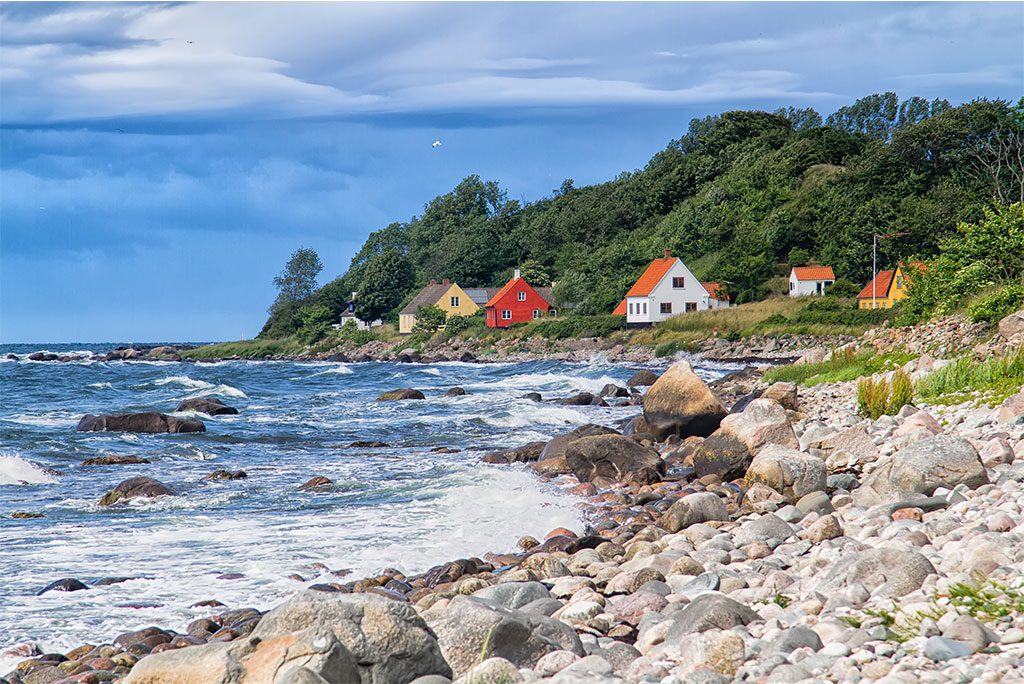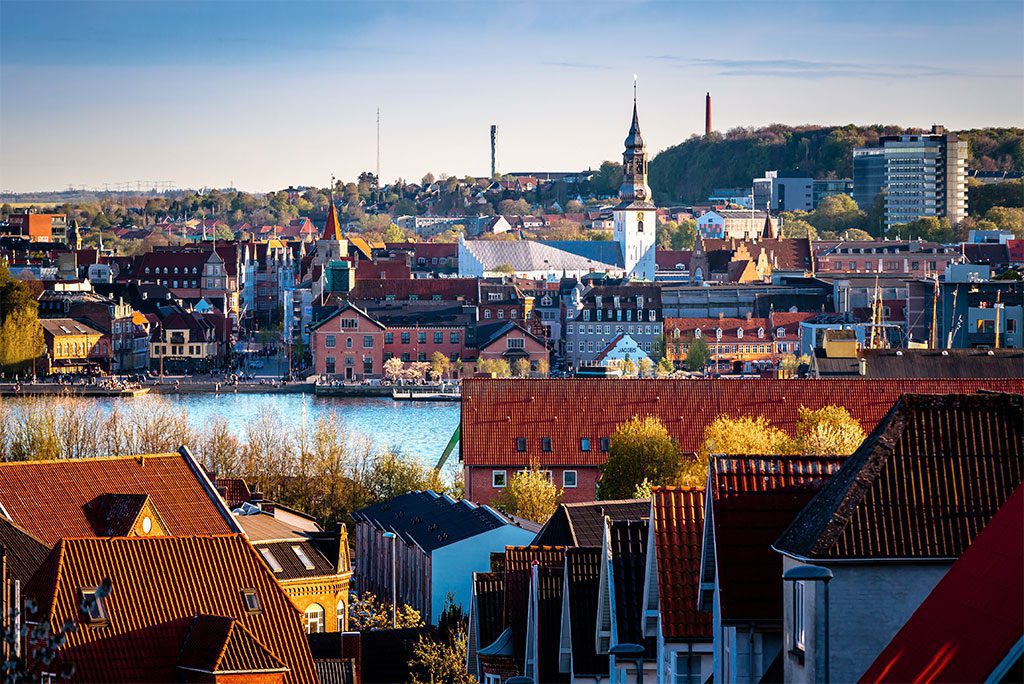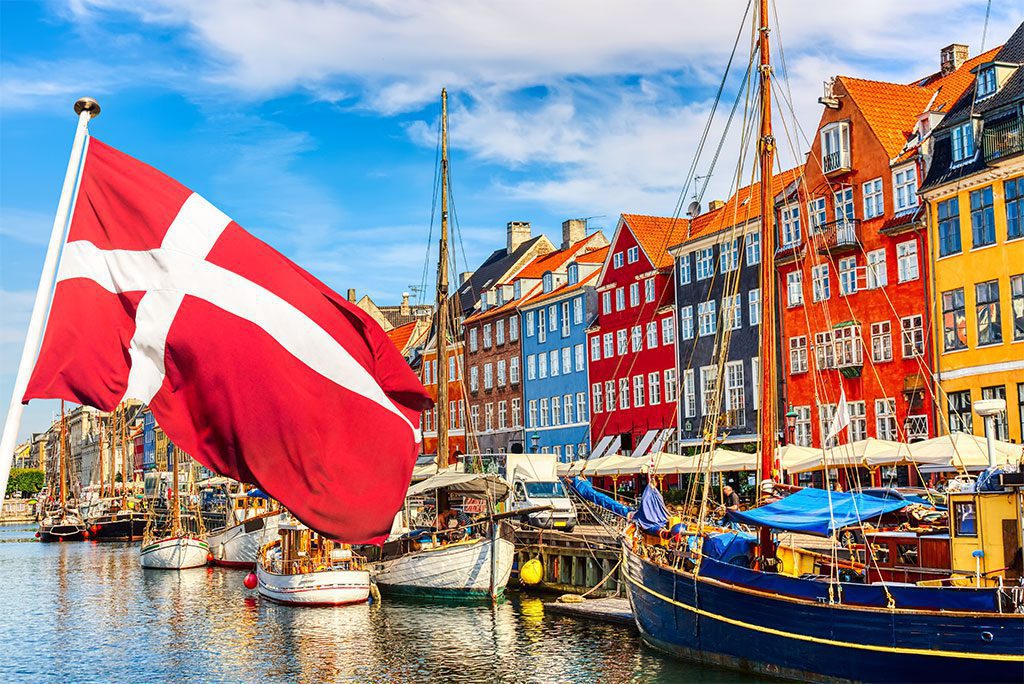Are you looking for a destination with breathtaking scenery, charming cities, and rich cultural history? Look no further than Denmark, one of Europe’s most beautiful and joyful countries.
Although Denmark is known for its fierce Viking warriors, it is now a peaceful and wealthy place with plenty to see and do. Its windswept shores are dotted with picturesque fishing villages, palaces, and castles, while its interior is made up of rolling plains and fertile farms. Plus, Denmark’s territory also includes Greenland and the Faroe Islands, adding to its unique character.
Copenhagen, the capital of Denmark, is often ranked as one of the best places to live in the world. It boasts beautiful parks, waterways, and colorful buildings lining the harbor. You can visit royal palaces, museums, and famous landmarks like the Little Mermaid statue and Tivoli Gardens theme park. If you’re a foodie, you’ll love trying out the adventurous cuisine in Copenhagen’s stylish shops, restaurants, and bars.
For more exploration, head to Aarhus or Odense. Aarhus has a lively arts, culture, and nightlife scene, with plenty of old buildings kept in good shape. Meanwhile, Odense has a stunning historic center with sculptures and statues from Hans Christian Andersen’s fairy tales.
But that’s not all Denmark has to offer. Let out your inner child at Legoland, take in stunning coastal views and pristine beaches at Bornholm or Skagen, or visit the fascinating Viking Ship Museum in Roskilde, which also hosts one of Scandinavia’s biggest and best music festivals.
Denmark’s unique blend of Viking history, creative design, and stunning natural landscapes make it a must-see destination for any traveler. So why wait? Plan your trip to Denmark today and experience all it has to offer.
10. Wadden Sea National Park

Located in the Wadden Sea, which is shared by Germany, the Netherlands, and Denmark, this national park is comprised of more than 30 islands and is home to hundreds of migrating birds as well as the nesting grounds for several kinds of seals.
Bird watching is perhaps the most popular activity in the Wadden Sea, which is one of the 10 most significant wetlands in the world. Oyster picking is another enjoyable activity that may be done in the Wadden Sea National Park
9. Bornholm

Located in the Baltic Sea between Poland and Sweden rather than Denmark, you may take a boat to get there.
There are Neolithic sun temples and a medieval castle here. The island of Bornholm is also the location of the suspense novel Hornet Flight by Ken Follett.
The island is home to a number of charming windmill-adorned villages and several circular churches.
Bornholm’s exceptional environment ranges from jagged sea cliffs and forests to beautiful valleys and beaches; it was held by the Germans and the Soviets during World War II.
8. Roskilde

One of Denmark’s early capitals, Roskilde, is located 30 kilometers west of the modern capital, Copenhagen.
Many Danish kings and queens are buried in here, one of the country’s oldest cities. Their bodies were laid to rest at the Roskilde Cathedral, Scandinavia’s first brick Gothic cathedral, which was built in the 12th century.
Another popular site is the Viking Ship Museum, which houses the remnants of five Viking ships that were sunk to defend Roskilde from sea invasions.
Aside from the Roskilde Jars, three enormous jars built to celebrate the city’s first thousand years, you may also wish to visit the former royal palace, which is now an art museum.
The world-famous rock music festival, Roskilde Festival, takes place here every year in late June or early July.
7. Skagen

Skagen, the city at Denmark’s farthest northern point, is not only a major fishing port but also a major tourist attraction, drawing in over 2 million people every year.
Impressionist artists flocked to this picturesque fishing community in the 19th century for its picturesque seascapes, long sandy beaches, and fishermen.
Skagen has been a popular summer destination for the rich, notably Scandinavian sailboaters, since the early 1900s, when it was frequented by the Danish monarchy.
Try some of the herring caught in the waters of Skagen, where the Baltic and North Seas meet. There is a historic lighthouse in the city that is among the oldest in all of Denmark
6. Aalborg

Aalborg is another old Danish city that has developed into an important industrial and cultural hub over the years.
It is famous for its opera, symphony, and theatrical productions, as well as being the biggest Scandinavian celebration dedicated to the carnival tradition. The Aalborg Carnival draws visitors from all over the world.
Aalborghus Castle (a former royal palace) dates back to the 16th century, and the 14th-century Budolfi Church was constructed on the site of a prior Viking church.
Two significant historic structures include the 17th-century mayor’s half-timbered and sandstone mansion and the Dutch Renaissance home of Jens Bang, which has served as a pharmacy for three centuries.
5. Rabjerg Mile

Rbjerg Mile is a sand dune that is one kilometre wide and one kilometre long. It is 40 metres high and made up of about 3.5 million cubic metres of sand. Every year, it moves about 15 metres to the northeast, getting closer to Denmark’s highest point, Grenen.
Up to 500,000 people come to see this amazing natural phenomenon. From the top of the dunes, you will experience a stunning view.
The walk to the top can be a bit challenging, but the view is worth your sweat and effort, and the church of Saint Lawrence, known as the sand-covered church, is a real testimony of how the landscape has changed over the centuries due to the moving dunes.
4. Aarhus

Aarhus is Denmark’s second-largest metropolis. It faces the Aarhus Strait and the bay.
This city in central Jutland is conveniently located close to the coast, several woodlands, and many national parks.
But it’s also a hub for artistic expression. Among Aarhus’s most recognizable monuments is the ARoS Aarhus Art Museum. Guests may see the stunning rooftop sculpture while taking a stroll.
The Old Town open-air museum caters to those with varying preferences. It’s a popular destination for tourists in Denmark. Go on a historical adventure in Old Town. The homes, landscapes, and daily routines of Danes from all eras are all there for you to explore and learn about.
3. Odense

The third-largest city in Denmark, Odense sits on the island of Fyn, west of Copenhagen.
The Saint Canute Cathedral, a brick Gothic temple built at the start of the 14th century, is the city’s most recognizable and well-known landmark.
Many visitors go here to see the home where the well-known author Hans Christian Anderson lived; it has been converted into a museum where you can see some of his writings.
The Funen village is an outdoor museum in Odense consisting of roughly twenty traditional Danish homes and farms, the purpose of which is to recreate life in the nineteenth century.
2. Faroe Islands

The Faroe Islands are located in the North Atlantic, and no location on the islands is more than five kilometers from the water.
Around the area, which is mostly high mountains, there are about 70,000 sheep and more than 2 million pairs of seabirds, including the largest colony of storm petrels in the world.
There are less than 20,000 people living in the capital of Taurus Shawn, making it the least populous capital in all of Europe. It is also one of the roughest cities you’ve ever seen, with gloomy skies, a constantly churning sea, high grassland hills, and rocky coastal cliffs. Between early July and late August, the islands get the lion’s share of their annual tourists; this is a good time to go if you’re interested in seeing some of the world’s rarest plants and animals
1. Copenhagen

Located on the eastern coast of Zealand, the capital city of Denmark, Copenhagen is also the country’s most populous urban area and home to the oldest operating amusement park in the world, Tivoli Gardens, which first opened its gates to the public in 1843.
Sailing around Copenhagen’s canals is a unique and entertaining way to see the Danish capital, and the vibrant new Hound canal has quickly become a symbol of the city.
One of Copenhagen’s most recognizable landmarks is The Little Mermaid, a bronze statue that has dominated the city’s Baltic Sea–facing Lana Linea Waterfront Promenade since 1913.
Visit the town hall square, Al Hus Blossom, and the King’s Garden on your stroll around the Danish capital, and don’t miss the National Gallery of Denmark and the national museum if you’re interested in art or history
Denmark is rolling out all kinds of entertainment, from heritage treats to architectural treasures, modern art, and delicious traditional cuisine.
Does Denmark really deserve to be ranked as the happiest country on earth several times?



